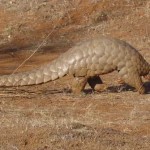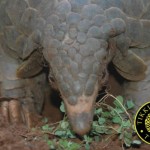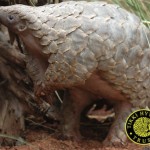
The news for pangolins could not be worse as 183 member countries prepare to vote on whether or not this enigmatic species will be granted the strongest international protection provided under the Convention on International Trade in Endangered Species (CITES).
Between 1 January and 20 September 2016, 77 confirmed pangolin trafficking incidents spanning 19 countries1 have yielded the following shocking seizure numbers:
- 18, 670 tonnes of pangolin scales
- 676 pangolin carcasses
- 611 live pangolins
2016 has been an especially deadly year for African pangolins.
Of the 18,670 tonnes of pangolin scales seized, 13,400 tonnes were plundered from the African continent.
- 4,000 tonnes from Cameroon
- 7,300 tonnes from Nigeria
- 2,100 tonnes from Ghana
The 13,400 tonnes were all seized in Hong Kong.
Pangolin scales comprise approximately 20% to 30% of the animal’s weight, depending on the age and species, according to pangolin expert Lisa Hywood of Tikki Hywood Trust in Zimbabwe.
Three NGOs with special expertise in pangolin trade issues – Tikki Hywood Trust (Zimbabwe), Annamiticus (United States), and Education for Nature-Vietnam – note a disappointing lack of prosecutions following these seizures.
In particular, there is a glaring absence of arrests and investigative activity regarding the large container shipments intercepted in China, including Hong Kong.
All eight pangolin species are at risk of extinction, and are currently listed in CITES Appendix II, which allows for regulated legal commercial trade only if such trade is not a threat to wild populations. Asian pangolins are supposed to be further protected by a zero export quota for wild-caught individuals intended for commercial purposes, but in Africa, there is no further protection from trade.
However, the CITES Appendix II listing has proven problematic to implement across all pangolin range states in Africa and Asia. The CITES Appendix II listing has instead provided unlimited opportunities for criminal networks to profit from illegal trade in pangolins.
If Parties vote to transfer all pangolin populations to CITES Appendix I, then African and Asian range countries will be empowered to protect this unique species from international criminal networks.
1 Annamiticus (2016, in prep.). The Global Scale of Pangolin Trafficking.

![State of the Pangolin [Podcast]](https://annamiticus.com/wp-content/uploads/2016/08/BehindTheSchemesEpisode42-150x150.png)


